Aldol condensation proceeds by carbon-carbon bond formation between an enolate donor and a carbonyl acceptor. For each of the following aldol products (a thorugh e) select a donor and an acceptor compound from the list at the bottom of the page (compounds A through H). write the letter corresponding to your selection in the appropriate answer box.
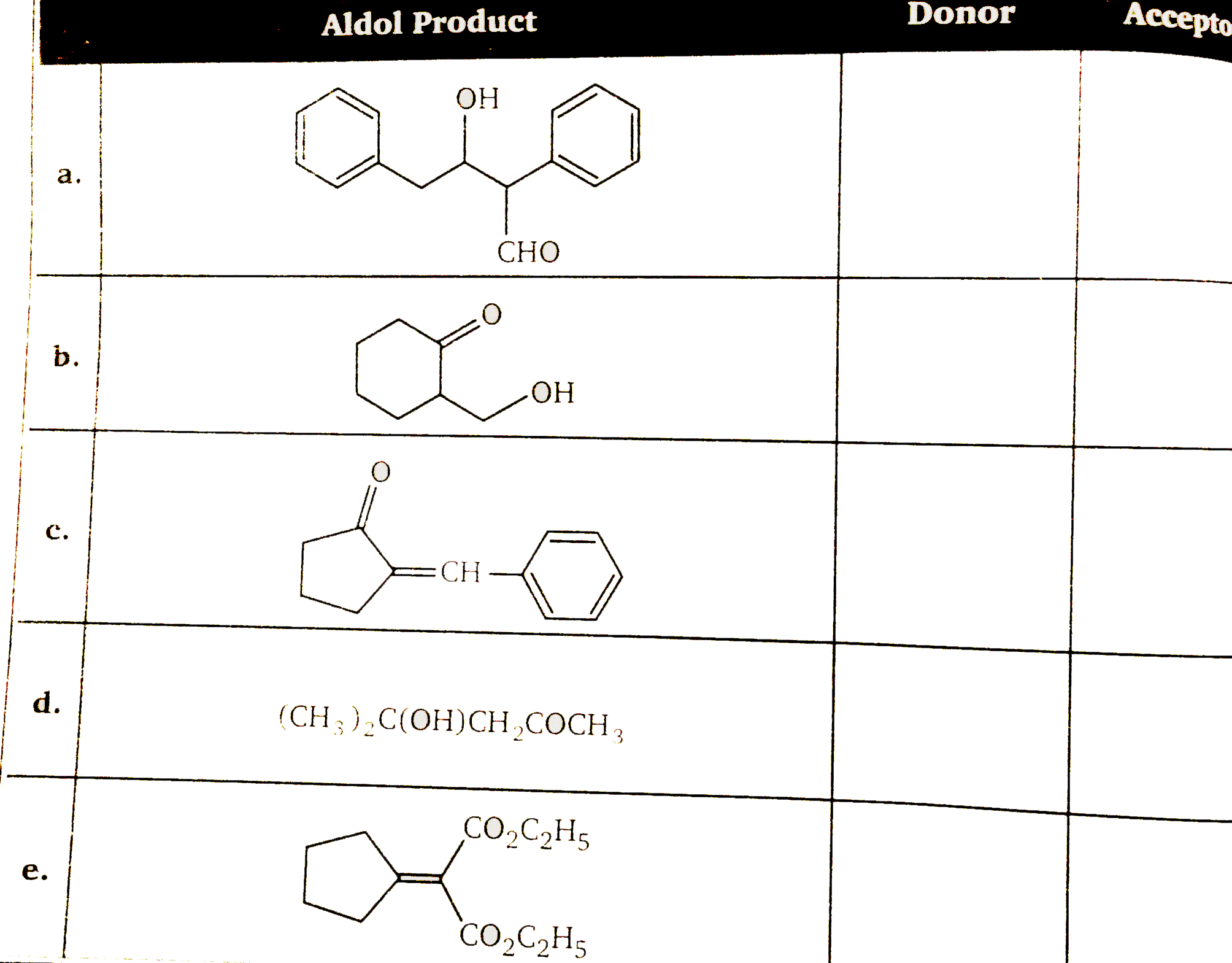 .
.
Q. 
The correct Answer is:a-Donor=C, Acceptor=C;b-Donor=E,Acceptor=D; c-Donor=B,Acceptor=A;d-Donor=G,Acceptor=G;e-Donor=F,Acceptor=B
a-Donar=C,Acceptor=C,b-Donar=E,Acceptor=D,c-Donar=B,Acceptor=A,d-Donar=G,Acceptor=G,e-Donar=F,Acceptor=Bs
Topper's Solved these Questions
- BOOK - MS CHOUHANCHAPTER - ALDOL AND CANNIZARO REACTIONEXERCISE - Level 1 (Q.1 To Q.30)6videos
ALDOL AND CANNIZARO REACTION
- BOOK - MS CHOUHANCHAPTER - ALDOL AND CANNIZARO REACTIONEXERCISE - Level 1 (Q.31 To Q.48)3videos
ALDOL AND CANNIZARO REACTION
- BOOK - MS CHOUHANCHAPTER - ALDEHYDES AND KETONES II. ALDOL REACTIONS EXERCISE - ADDITIONAL OBJECTIVE QUESTIONS (LINKED COMPREHENSION TYPE )6videos
ALDEHYDES AND KETONES II. ALDOL REACTIONS
- BOOK - MS CHOUHANCHAPTER - ALKENES AND ALKYNES IIEXERCISE - ADDITIONAL OBJECTIVE QUESTIONS (Matrix Match Type)2videos
ALKENES AND ALKYNES II
Similar Questions
Aldol condensation proceeds by carbon- carbon bond formation between an enolation donor and a carbonyl acceptor For each of the following aldol products (1 through 4)

Match the donor and acceptor compound.
 View Solution
View SolutionIn each of the following three questions a hydrocarone is nemed. For each select from among the sixteen conformational structures (A through p) all structures that represent possible conformers of that compound. Write latters (a through p), corresponding to your selections in each answer box.
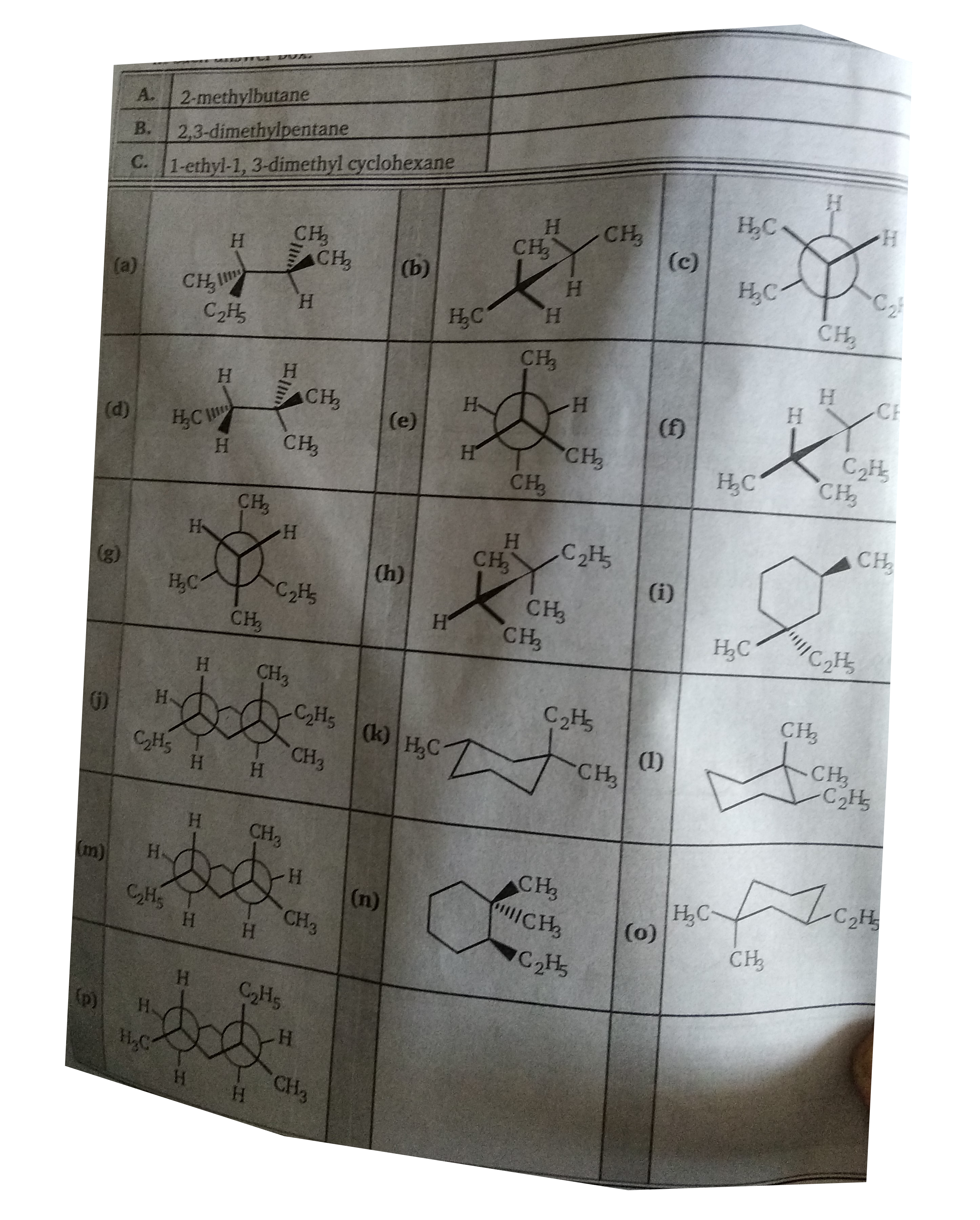 View Solution
View Solution
Knowledge Check
- Question 1 - Select One
During an experimental workup procedure, a chemist treated a starting material with NaoH in the solvent acetone [(CH3)2C=O], however, the starting material was recovered unreacted. Instead, the chemist isolated a small amount of product A (shown below).
Product A
1. Elemental analysis of product A indicated that it consisted only of carbon, hydrogen, and oxygen.
2. Product A had a molecular weight of 116 g/mol.
3. Product A was a methyl ketone because it gave a positive iodoform test.
4. When product A was treated with Br2 in CCl4, the red bromine colour persisted, because no carbon-carbon double bonds were present to react with the bromine.
The structure of product A was further confirmed when treatment with hot sulfuric acid resulted in the corresponding dehydration product, product (B)gt
Q. What is the molecular weight of a compound that undergoes an aldol self-condensation reaction to result in a β-hydroxy ketone with a molecular weight of 144?A70g/molB72g/molC74g/molD76g/mol - Question 2 - Select One
In metal carbonyls, there is synergic bonding interaction between metal and carbon monoxide. This leads to increase in strength of metal ligands bond and decrease in bond order of CO in carbonyl complex as compared to bond order in carbon monoxide.
Simple carbonyls are invariably spin-paired complexes except for vanadium metal.
Which one of the following metal carbonyls are inner orbital complexes with diamagnetic property ?
(P)Ni(CO)4 (Q)Fe(CO)5
(R)V(CO)6 (S)Cr(CO)6
Select the correct answer from the codes given below :AP and Q onlyBQ, R and S onlyCQ and S onlyDP, Q and S only
Nitrobenzene is a versatile compound that may be converted inot a wide variety of subsituted benzenes. Five such synthesis are shown below. In each reaction box above an arrow write letters designating the reagents and conditions, selected from the list at the bottom of the page, that would effect the transformation. The reagents must be written in the answer box in the correct order of their use. You may assume appropriate heating or cooling takes place, and more than one equivalent of the reagent may be used if needed.
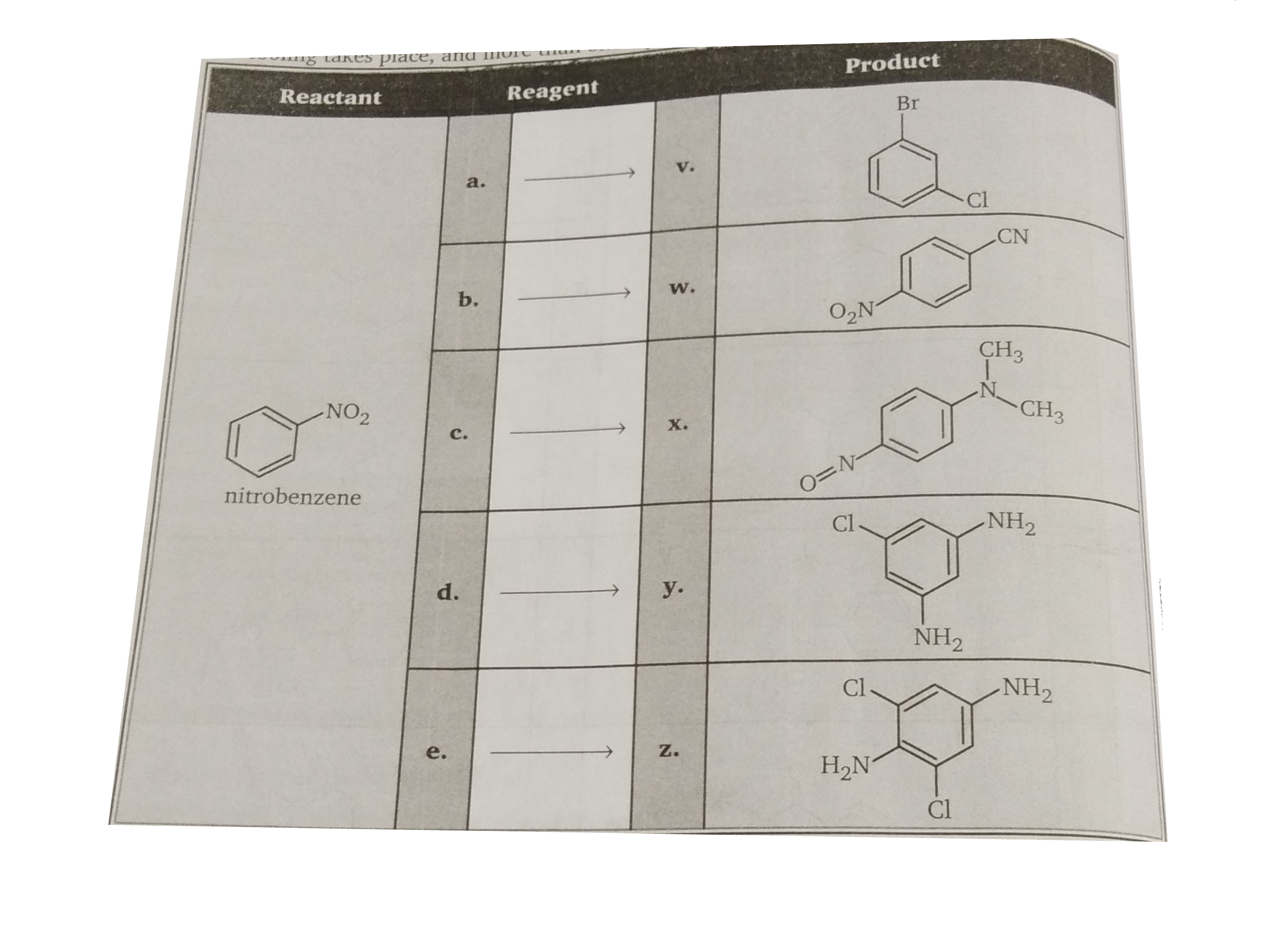
ReagentsReagentsAH2,NicatalystFCl2 & FeCl3BKBr & Cu2Br2GNaOH10% solutionCKCN & Cu2(CN)2H(CH3CO)2O, pyridineDHNO20∘CIHNO3/H2SO4ECH3I & pyridineView SolutionEcamine structures a through j, shown below, with reaspect to their symmerty or lack of it. Assuming that the five-membered rings and the ring in compound g are plannr. The wedgephatched bonds in b,c,d & e designate specific configuration. Also for the acyclic compounds assume stable anti conformations. Answer each of the following questions by writing letters (a through j), corresponding to your selections, in each answer box. If there is no structure that fits the description enter an x in the answer box.
 View Solution
View SolutionThe following questions refer to the twelve compounds given below. You may enter as many as six choices in each answer box.

Which may serve both as H-bond donors and acceptors ?View SolutionIsobuty alcohol (2 -mehyl 1 -1-propanol), (CH3)2CHCH2OH, can be transformed to each of the compounds (a through 1) listed in the left-hand column. In each case the number of steps the needed to accomplish the change is noted, and an answer box is noted, and answer box is provided for your reagent selections. Fourteen reagents (designated A through N) are listen in the right -hand column. corresponding to the desired compound.
Write letters desiganating the raagent or reagents you believe will achieve the desired transformation in the box to the right of the product formula. In the case of a multi-step sequence write the reagents in the order they are to be used. In some cases you may wish to use a previously prepared compound as a reactant. If so, write the number (a to 1) corresponding to the desired compound.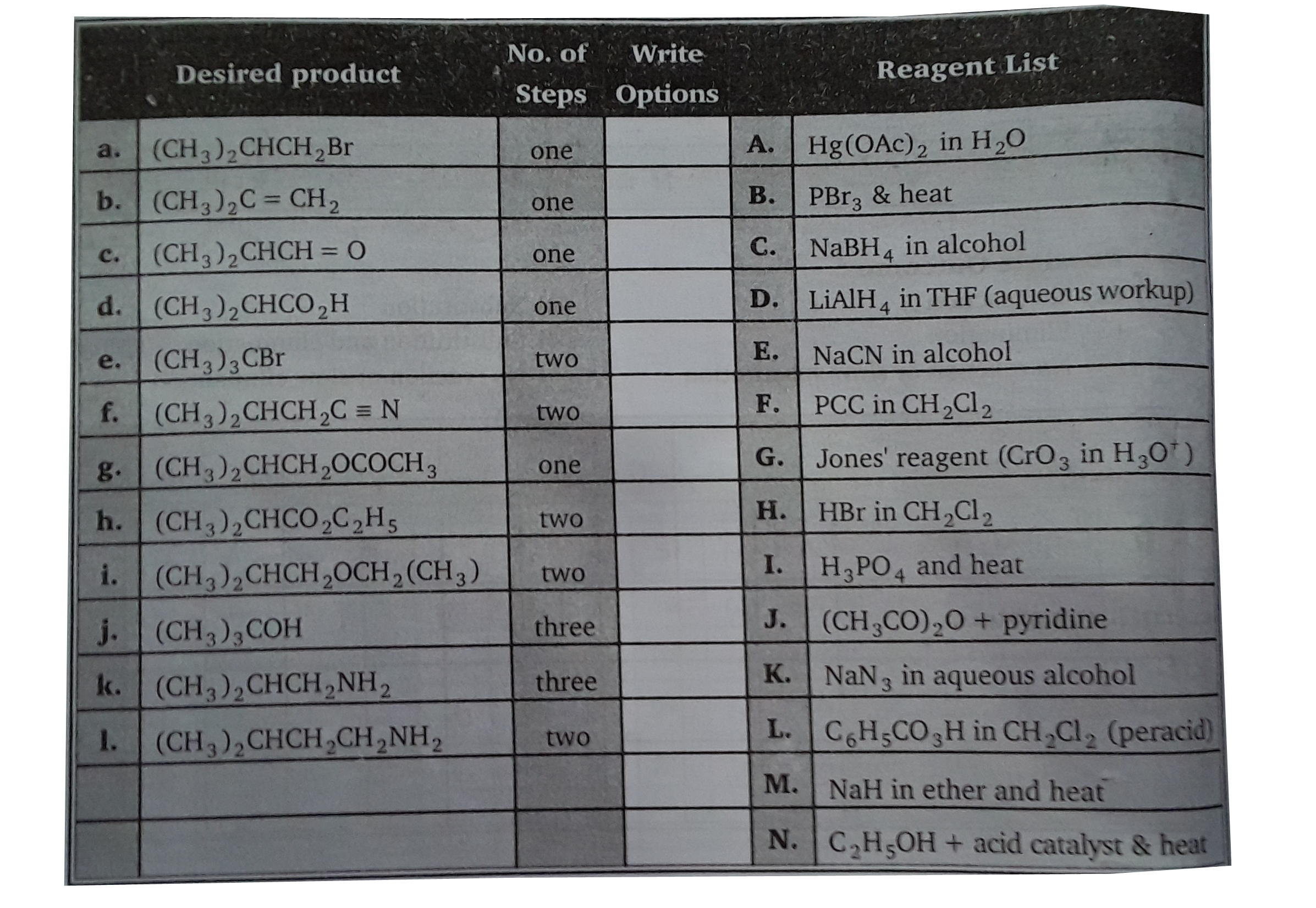 View Solution
View SolutionExamine the ten structural formulas shown below and select those that satisfy each of the following conditions. Enter one or more letters (a through j) in each answer box, reflecting your choice for each.
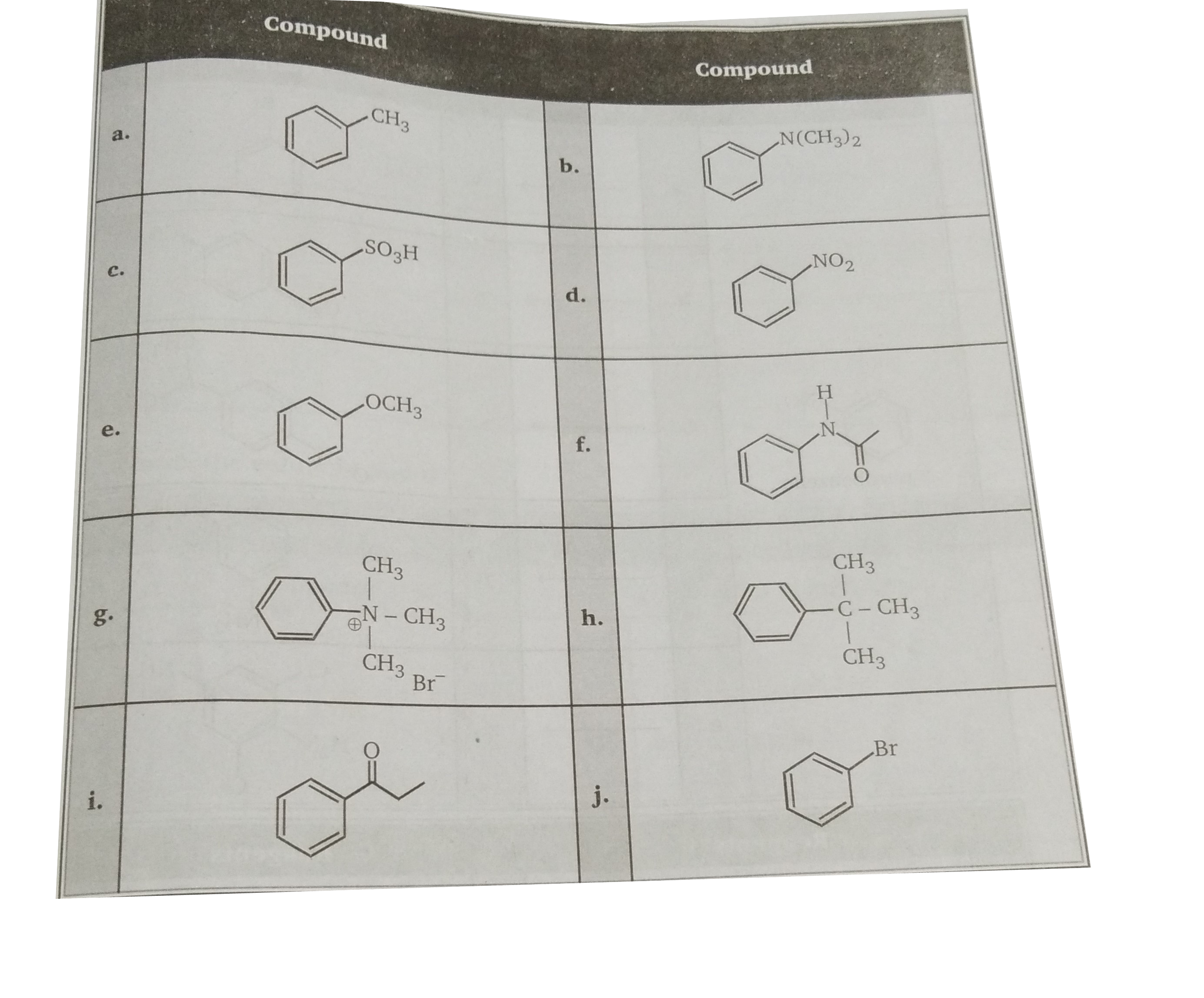
AWhich compounds undergo electrophilic nitration more rapidly than benzene ?BWhich compounds give meta substitution under electrophilic bromination conditions ?View SolutionThis problem is an introduction to the planning of multistep syntheses.
For use, you have six reactant compound (A through F), and eight reagents (1 through 8), shown below.
Following these lists, five multistep syntheses are outlined. For each of these, certain reactants or reagents must be identified by writing an appropriate letter or number in designated answer boxes. Write a single letter or number, indicating your choice of the best reactant, in each answer box.

(1) Jones' reagent [Na2Cr2O7 in H3O+], (2) PCC[CrO3 in pyridine +HCl]
(3) Sodium hydride NaH, (4) Sodium borohydride NaBH4
(5) Thionyl chloride SOCl2, (6) Phosphorus tribromide PBr3
(7) Aluminium trichloride AlCl3, (8) Magnesium turnings in ether
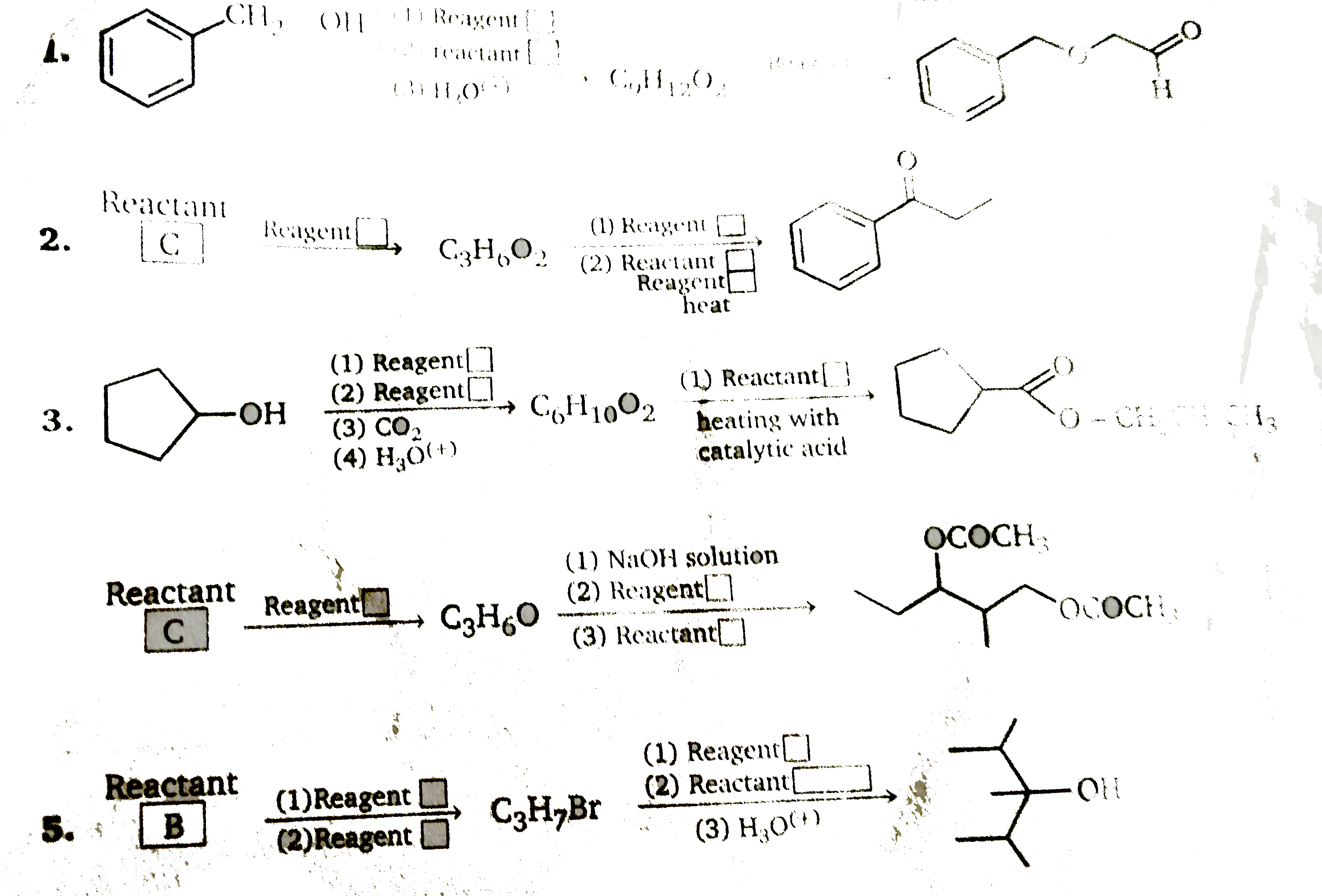 View Solution
View Solution

